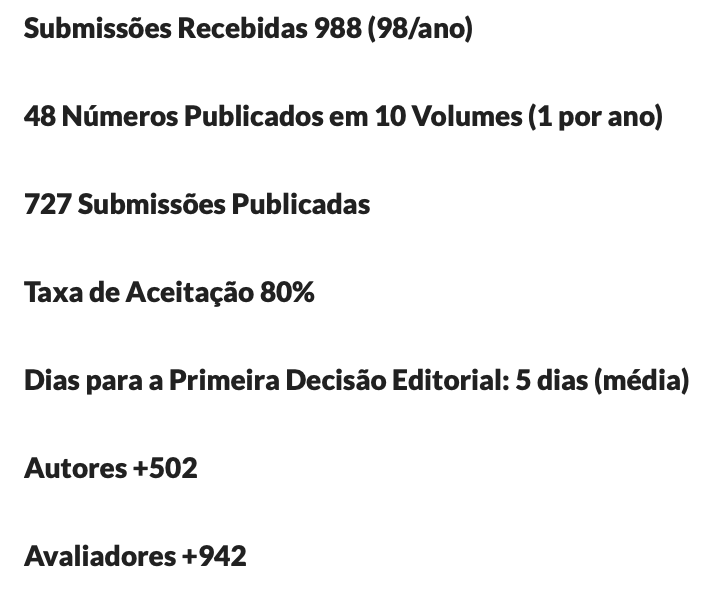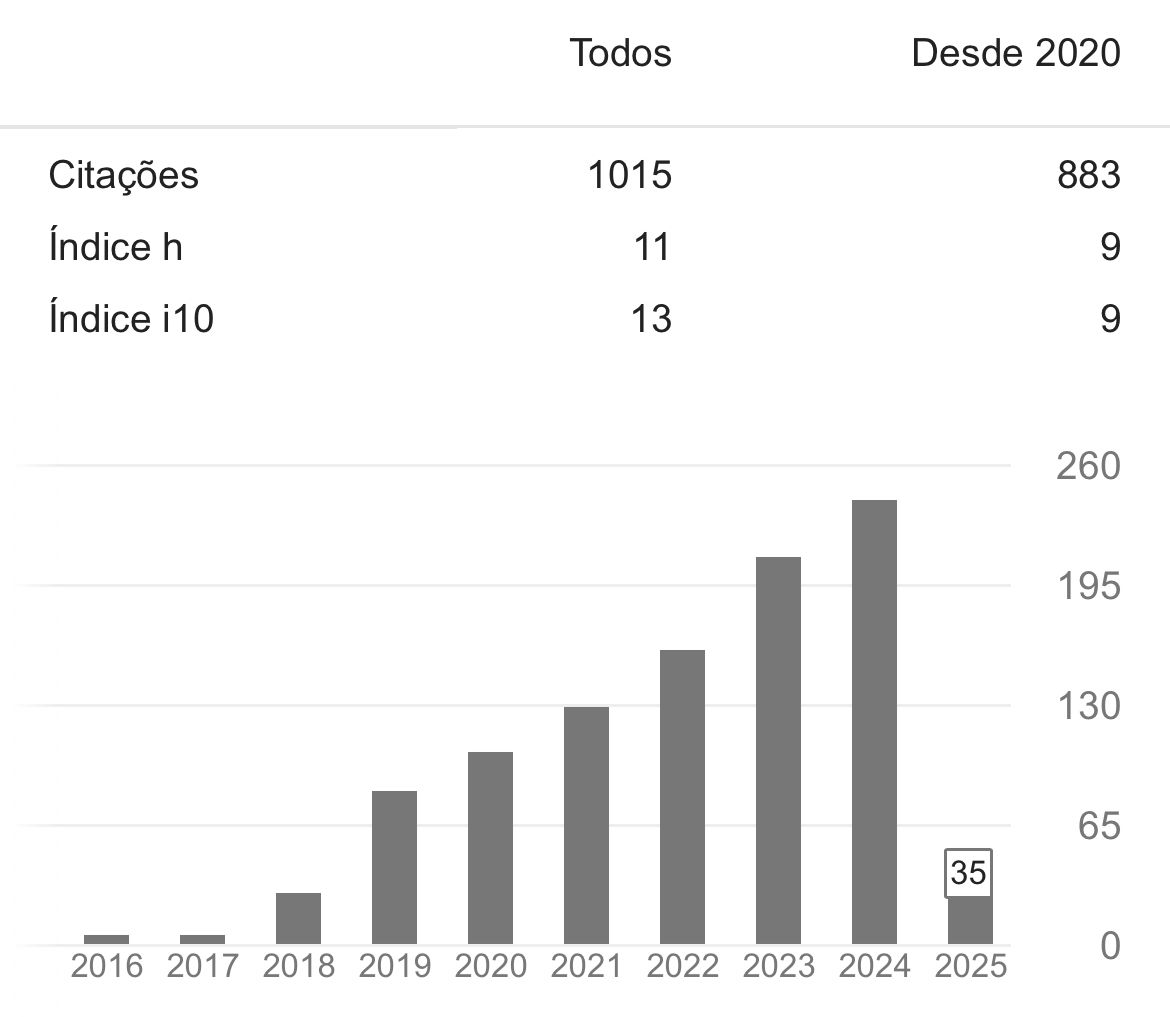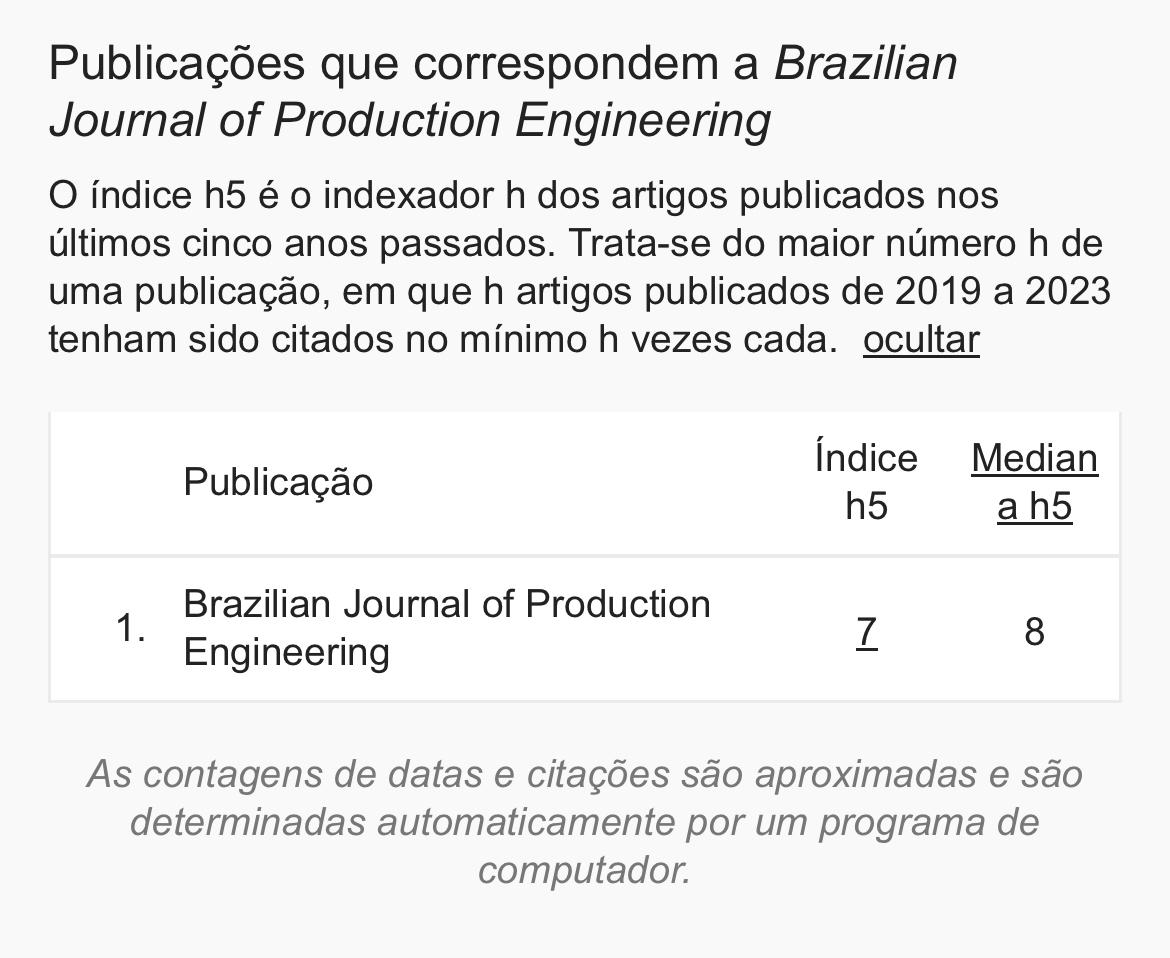Análisis bibliométrico de la producción científica sobre métodos de control de plagas y enfermedades en ambientes protegidos en la base de datos Web of Science
Palabras clave:
Bibliometria; Aplicação de fitossanitários; Tecnologia; Inovação.Resumen
Este estudio trata del análisis de la producción científica sobre métodos de control de plagas y enfermedades en ambientes protegidos a través de indicadores bibliométricos. El área fue elegida por su relevancia para el desarrollo socioeconómico del país. Los datos elaborados a través de estudios bibliométricos miden la contribución del conocimiento científico derivado de las publicaciones en determinadas áreas. El objetivo de este trabajo fue realizar una revisión bibliométrica de la base de datos obtenida de la plataforma Web of Science® sobre métodos de control de plagas y enfermedades en ambientes protegidos, basados en la tecnología de aplicación de plaguicidas agrícolas, brindando un panorama de los avances científicos y tecnológicos llevados a cabo. fuera hasta la fecha. en segundo lugar.
Descargas
Citas
Abdelfattah, A., Malacrino, A., Wisniewski, M., Cacciola, S. O., &Schena, L. (2018). Metabarcoding: A powerful tool to investigate microbial communities and shape future plant protection strategies. BiologicalControl, 120, 1-10.
AgrosolExport (2016). Almería, Tierra De Agricultores. Blog Agrosol. Recuperado de https://www.agrosolexport.com/almeria-tierra-agricultores/
Belhadi, A., Mehenni, M., Reguieg, L., &Yakhlef, H. (2016). Potential risks to human health and the environment of the pest-control practices of greenhouse farmers in the Algerian Pre-Sahara. Environnement, Risques& Santé, 15(3), 219-227.
Brooker, R. W., Karley, A. J., Newton, A. C., Pakeman, R. J., &Schöb, C. (2016). Facilitation and sustainable agriculture: a mechanistic approach to reconciling crop production and conservation. Functional ecology, 30(1), 98-107.
Centner, T., & Eberhart, N. (2014). Requiring pollutant discharge permits for pesticide applications that deposit residues in surface waters. International journal of environmental research and public health, 11(5), 4978-4990.
Embrapa.(2018). Embrapa apresenta cultivares de tomate com elevada produtividade e alto valor agregado na Afubra 2018. Recuperado em 3 fevereiro, 2019, de https://www.embrapa.br/busca-denoticias/-/ noticia/32600557/embrapa-apresenta-cultivares-de-tomate-com-elevadaprodutividade- e-alto-valor-agregado-na-afubra-2018
Gázquez, J. A., Castellano, N. N., &Manzano-Agugliaro, F. (2016). Intelligent low cost telecontrol system for agricultural vehicles in harmful environments. Journal of Cleaner Production, 113, 204-215.
Hoffmaster, E., Vonk, J. &Mies, R. (2016). Education to action: Improving public perception of bats. Animals, 6(1), 6.
Huat, J., Aubry, C., &Doré, T. (2014). Understanding crop management decisions for sustainable vegetable crop protection: a case study of small tomato growers in Mayotte island. Agroecology and sustainable food systems, 38(7), 764-785.
Katan, J. (2010). Cultural approaches for disease management: present status and future prospects. Journal of Plant Pathology, 92 (4) 4.7- 4.9.
Klasen, J., Schmolz, E., Hübner, N. O., &Schwebke, I. (2014). On the relevance of the official lists for notified products and measures for disinfection, disinfestation and control of vertebrate pests ordered by an authority on the legal basis of § 18 IfSG (German Protection against Infection Act). Bundesgesundheitsblatt, Gesundheitsforschung, Gesundheitsschutz, 57(5), 568-573.
Krishnamurthy, L., Upadhyaya, H. D., Gowda, C. L. L., Kashiwagi, J., Purushothaman, R., Singh, S., &Vadez, V. (2014). Large variation for salinity tolerance in the core collection of foxtail millet (Setariaitalica (L.) P. Beauv.) germplasm. CropandPasture Science, 65(4), 353-361.
Lacerda, R. T. D. O., Ensslin, L., &Ensslin, S. R. (2012). Uma análise bibliométrica da literatura sobre estratégia e avaliação de desempenho. Gestão & Produção, 19(1), 59-78.
Law, S. E. (2001). Agricultural electrostatic spray application: a review of significant research and development during the 20th century. Journal of Electrostatics, 51, 25-42.
Lima, K. F. F., da Silva Porto, P. S., & de Freitas, R. R. (2018). Métodos de extração de bio-óleo a partir da microalga Nannochloropsis oculata: uma análise bibliométrica. Research, Society and Development, 7(6), 2.
Mahar, J. E., Read, A. J., Gu, X., Urakova, N., Mourant, R., Piper, M., ... & Hall, R. N. (2018). Detection and circulation of a novel rabbit hemorrhagic disease virus in Australia. Emerging Infectious Diseases, 24(1), 22.
Malneršič, A., Dular, M., Širok, B., Oberti, R., & Hočevar, M. (2016). Pulverização localizada de precisão assistida por ar de curto alcance para aplicações robóticas: Aerodinâmica e análise de cobertura de pulverização. Biosystems Engineering, 146 , 216-226.
Manciuc, D. C., Iordan, I. F., Adavidoaiei, A. M., &Largu, M. A. (2018). Risks of leptospirosis linked to living and working environments. Environmental Engineering & Management Journal (EEMJ), 17(3).
Nuyttens, D., Braekman, P., Windey, S., & Sonck, B. (2009). Potential dermal pesticide exposure affected by greenhouse spray application technique. Pest Management Science: formerly Pesticide Science, 65(7), 781-790.
Pacheco, A. B., da Silva, T. J., Bonfim-Silva, E. M., Castro, H. A., & Koetz, M. (2018). Yield and water use of cherry tomato under water availability and potassium doses. Revista Brasileira de Engenharia Agrícola e Ambiental, 22(5), 326-331.
Peterson, K., &Diss-Torrance, A. (2012). Motivation for compliance with environmental regulations related to forest health. Journal of environmental management, 112, 104-119.
Skevas, T., Stefanou, S. E., &Lansink, A. O. (2013). Do farmers internalise environmental spillovers of pesticides in production? Journal of Agricultural Economics, 64(3), 624-640.
Wardlow, L. R., & O'Neill, T. M. (1992). Management strategies for controlling pests and diseases in glasshouse crops. Pesticidescience, 36(4), 341-347.
Yang, L., Huang, B., Hu, W., Chen, Y., & Mao, M. (2013). Avaliação e identificação da fonte de metais traço nos solos da produção de vegetais em estufas no leste da China. Ecotoxicology and Environmental Safety , 97 , 204-209.
Descargas
Publicado
Cómo citar
Número
Sección
Licencia
Derechos de autor 2020 Brazilian Journal of Production Engineering - BJPE

Esta obra está bajo una licencia internacional Creative Commons Atribución-NoComercial-CompartirIgual 4.0.

















































































